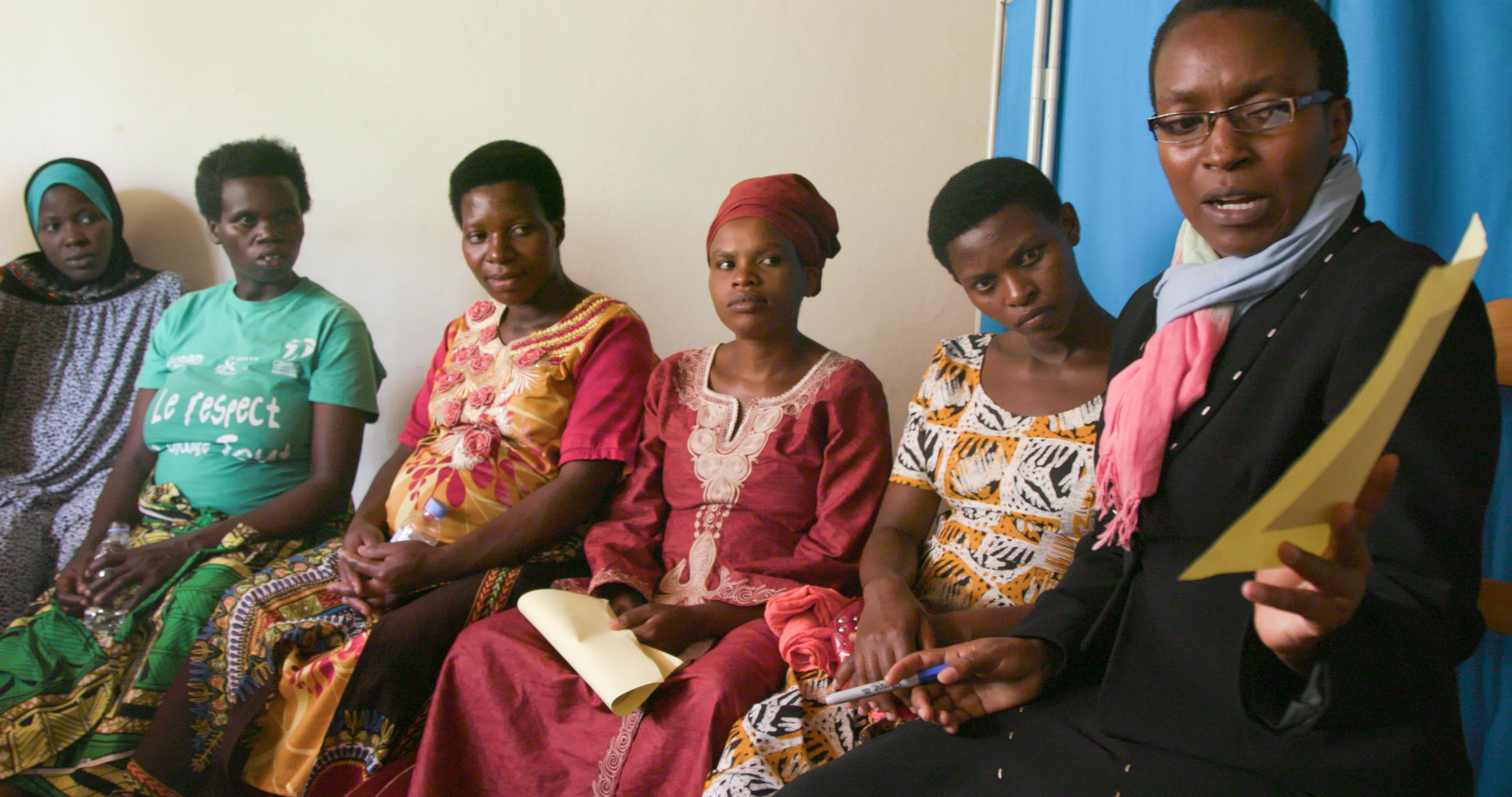
Studies in the US have shown that among the most vulnerable populations, especially young African American women, group prenatal care can lead to as much as a 33% reduction in preterm births. Could the same be true for pregnant women in Rwanda?
A new East Africa Preterm Birth Initiative (PTBi-EA) study underway in Rwanda aims to determine exactly that. PTBi-EA is a project of the Maternal and Newborn Health Research Cooperative in the UCSF Institute for Global Health Sciences.
Preterm birth is the top cause of newborn deaths around the world. Approximately one in 10 babies is born prematurely each year, according to the World Health Organization (WHO), and almost 1 million of these infants die within the first months of life. Still others face lifelong struggles with health deficits and disabilities.
Working with the Rwanda Ministry of Health and researchers at the Rwanda Biomedical Center and University of Rwanda, the PTBi team settled on a trial to determine the effects on preterm birth of group antenatal (prenatal) care.
“Attendance at prenatal visits is low in Rwanda,” says Tiffany Lundeen, CNM, MSN, MA, a UCSF midwife and PTBi-EA’s advisor for group care implementation in Rwanda. “Only about 44 percent of Rwandan women meet the pre-2016 WHO recommendation of four prenatal healthcare visits.” (The WHO increased the recommended number of prenatal healthcare contacts to 8 in 2016.)
Lundeen and a Rwandan working group, including midwives, doctors and radiologists, laid out a plan to adapt the group care model that originated in the US to this East African nation.
“It’s very close to what’s done in the United States,” Lundeen says, “except our Rwanda colleagues felt only four total antenatal care visits were feasible – in the U.S., it’s usually 10 or more. And like US group care, the Rwanda study includes a reunion at the six-week postnatal visit.”
The concept of group prenatal care was developed in the 1990s by U.S. midwife Sharon Schindler Rising. In this model of care, women with low-risk pregnancies and similar due dates are assigned to a group of about 10 by their midwife or healthcare provider. After an initial one-on-one visit, the women return to the clinic together. They check their own blood pressure and weights, which are then reviewed by the midwife, who also examines each woman’s pregnancy and monitors them for complications. Afterward, the women gather for an hour-long meeting on pregnancy-related topics, such as nutrition and self-care. The midwife guides the discussion, but “ideally the group members educate as well as support each other,” Lundeen says.
In addition to reducing the rate of premature birth, the US studies have found that women in group care report greater rates of attendance at prenatal visits and higher rates of satisfaction with their prenatal care.
For the Rwanda study, each group is co-facilitated by a nurse and a community health worker with a basic orientation in pregnancy, who stays with the group throughout the trial. “The community health workers help to ground the discussions at the level that the women want and need,” Lundeen says.
Field reports are full of anecdotal evidence that women are sharing themselves deeply in these groups. They are exchanging phone numbers and addresses and getting together socially. In some cases, they have pooled their money for emergencies and contributed to the layette for the poorest women in the group.
So far, 4,000 women have enrolled in the study, and group care was implemented for the first time June 19, 2017. About 7 percent of the cohort is age 19 or younger, consistent with the teen pregnancy rate in Rwanda.
Ultimately the study aims to recruit 11,000 women in 36 primary health centers across the country to take part in what is the largest cluster randomized control trial of group antenatal and postnatal care in the world. “That makes it really significant in what it will contribute to the global literature,” Lundeen notes. The trial will run through early 2019, with analysis expected by mid-2019.
While satisfaction among the mothers with the care and social support they receive will be measured, the primary outcome of the trial is the gestational age of the babies at birth. Will the preterm birth rate in the group care cohorts be lower than in the controls? And in cases of premature birth, will infants be more likely to survive because their mothers have higher levels of health literacy and empowerment?
“Our Rwandan partners always said if we have positive results in the trial, they are very interested in scaling group antenatal and postnatal care nationwide,” Lundeen says. “They’ve always said the model has to be sustainable – they really meant it – because once the trial ends, they want to be able to maintain it within their existing health care system.”
UCSF’s Preterm Birth Initiative (PTBi), a 10-year effort started in 2014 with funding from Lynne and Marc Benioff and the Bill and Melinda Gates Foundation, is at the forefront of research aimed at reducing preterm births in California and East Africa.